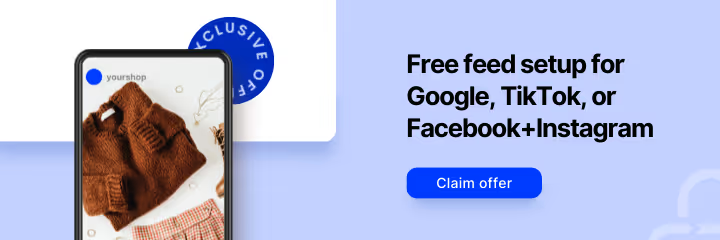Key performance indicators (KPI) can include a long list of data and vary depending on what your goals are. As your goals become more specific, so too do your KPI. If your goal is to sell, and achieve the greatest ROI doing it, you should begin to narrow your list and start focusing on these key performance indicators.
Conversion Rate
Conversion rates can be a simple yet powerful metric for online retailers. It can tell you how effective your ecommerce campaigns, landing pages and even messaging are.
Formula: Conversions / Clicks
Average Order Value
Average Order Value (AOV) can be one of the most telling metrics when measuring profitability of a sales channel. It can even tell you which products are the biggest drivers of revenue. AOV is especially important to determine the profitability of your shopping channel campaigns.
Take the total amount of revenue divided by number of orders during the same period. It can be cut up by channel, brand, sku, etc.
Formula: Average Order Value = Total Revenue / Number of Orders Taken
Cost
Successful retailers know the secret is not just in selling. It's in selling profitably. And the first guard against unprofitable selling is managing your cost.
For online retailers, this often comes down to measuring costs accrued by individual verticals (i.e., sales channels, brands and even SKUs).
Pro tip: When considering a product feed management software, be sure to choose one that provides aggregate Cost analytics with the ability to cut up reports based on these metrics. This will make it easier to get a transparent look at your Cost without the need for expensive ecommerce analytics solutions.
Cost-of-Sale Percentage
Cost-of-Sale Percentage (COS%) is the actual total cost of converting an item relative to the revenue it generated. For example, if one item with a $100 price tag sold and took $15 in click costs to convert, the COS% for that item at that point is 15%.
Unfortunately, you have to have a sale first in order to get this value. So what happens when a product has not sold yet? Enter the Estimated Cost of Sale.
Formula: COS% = Click Costs for Product / Product Revenue
Cost Per Order/Cost Per Acquisition
Cost per Acquisition (CPA) tells you how much you're spending on average to achieve a sale. Say your monthly ad spend on Google Shopping is $5,000 and with that you've acquired 202 sales. Your CPA then would be $24.75. It's important to measure CPA in relation to AOV per individual channel to determine profitability.
You can do this manually using Excel or, better yet, use your feed management software's analytics tools to create CPA and AOV reports by channel to identify which drive better orders.
Formula: Ad Spend / Orders
Return on Ad Spend
Return on Ad Spend (ROAS) tells you how much revenue your campaigns are generating in relation to how much you've spent on advertising. In other words, for every dollar invested in advertising, how much money did you get back in revenue?
If your feed management software offers cost reporting, you can cut up by ROAS by channel and by SKU to identify which channels and products are your big sellers and which are just costing you money.
Formula: (Revenue - Cost) / Cost
Customer Lifetime Value
Customer Lifetime Value is a prediction of the net profit attributed to the entirety of the relationship with a customer.
Measuring CLV can be challenging, given the multiple variables involved, but essentially it looks something like this:
Formula: (AOV / 1 - repeat purchase rate) - CPA
For example:
If...
- Average order value is $80
- Customer return rate is 25%
- Cost per acquisition is $12
Then...
- $80 / ( 1 - 0.25) = $106.67 - 3
- CLV = $94.67
CLV is an accurate predictor of a campaign’s long-term value and should be included in your Google Shopping reporting.




%20).png)
